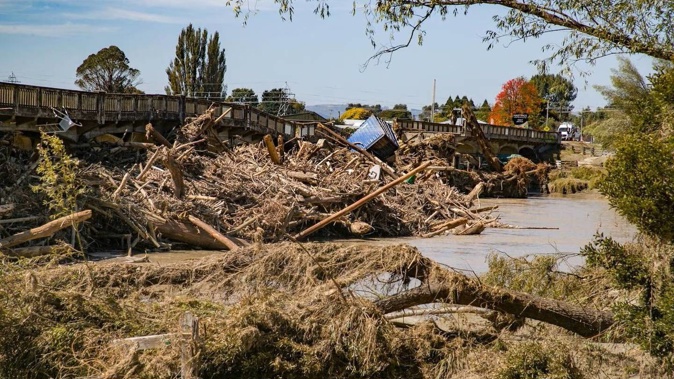
Much of the woody debris found on Hawke’s Bay beaches is from pine trees, but a regional council report confirms most of it is not slash.
Hawke’s Bay Regional Council (HBRC) released a report on Wednesday on the make-up of the woody debris that washed up against bridges, on beaches and ended up on flooded areas in the wake of Cyclone Gabrielle.
The survey was undertaken at 17 sites where damage occurred to bridges or where had debris accumulated on land or beaches, following guidelines created and used in the Gisborne/Tairāwhiti region.
“The aim of the report was to understand the likely origins of large woody debris that washed down the waterways during Cyclone Gabrielle to help inform future land use planning,” an HBRC statement said.
Chris Dolley, the council’s group manager of asset management, said the woody debris assessed in Hawke’s Bay was a mixture of pine, willow, poplar and “other” (native timber and debris that could not be identified).
“The woody debris composition differed from catchment to catchment and largely was the result of whatever tree species was predominant in the catchment upstream,” Dolley said.
“At all but one of the surveyed sites, there was little evidence of slash, indicating that the majority of pine came from erosion of hillsides and streambanks. The site with the most cut pine was Mangaone at Rissington, where 9 per cent of the timber had cut marks.”
Slash is generated by harvesting, pruning or thinning pine plantations and can be identified through evidence of machinery marks or the debris having a cut mark at one or both ends.
Places where wood debris was mostly pine included Upper Tutaekuri and Mangaone, Dartmoor and Rissington, Esk River and beach, Aropaonui beach, Waikare beach, Mohaka beach, Māhia beach and Wairoa river mouth.
Lower Tutaekuri, Puketapu and Awatoto were found to have predominantly willow wood debris and Te Ngarue was a mix of willow and pine.
- Investigations extended to scrutinise Cyclone Gabrielle forestry slash
- Forest Owners Association on Cyclone Gabrielle floodwaters spreading forestry slash
Ngaruroro was largely clear of debris.
Central Hawke’s Bay was found to be nearly all willow or poplar, based on preliminary assessments, but no formal survey was carried out.
A statement from HBRC said much of the pine found at the test sites constituted windthrown or previously dislodged wood, pine remaining from community operations or clearance, or general pieces for which no evidence of origin could be found, but which were near floodwaters and rivers.
The statement said willow was one of the most effective and commonly used species for both erosion and riparian margin control, due to the strength of its rooting systems.
“Riverbank plantings are essential for edge protection from river flows, and they protect from slips, as well as providing stock shelter and supplementary feed on farms,” the statement said.
“Willow proximity to rivers, combined with the volume and strength of the flood waters from Cyclone Gabrielle, have contributed to the willow found within the sites tested.”
The statement said areas of riverbank willow plantings that remained in place were proof they were one of the best options for erosion control.
The statement said HBRC was working with Waka Kotahi to consider flood control and bridges so the right decisions could be made around bridge deck heights and spans when rebuilding.
Take your Radio, Podcasts and Music with you









